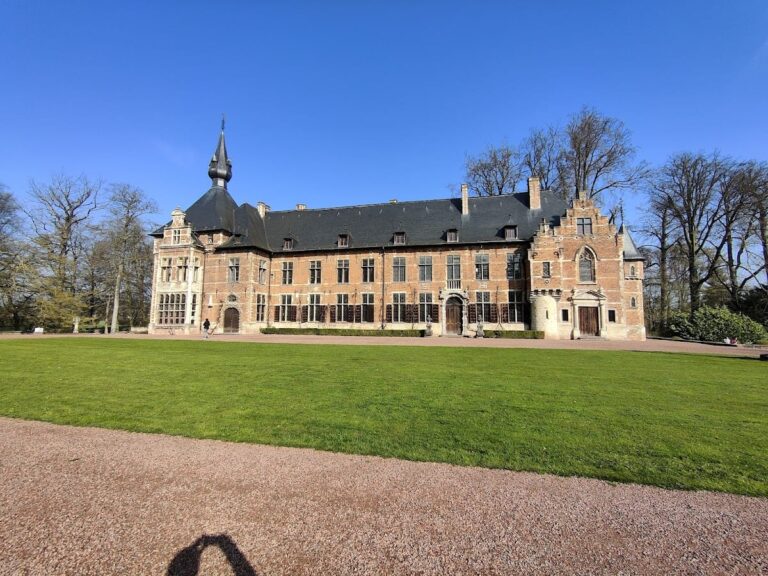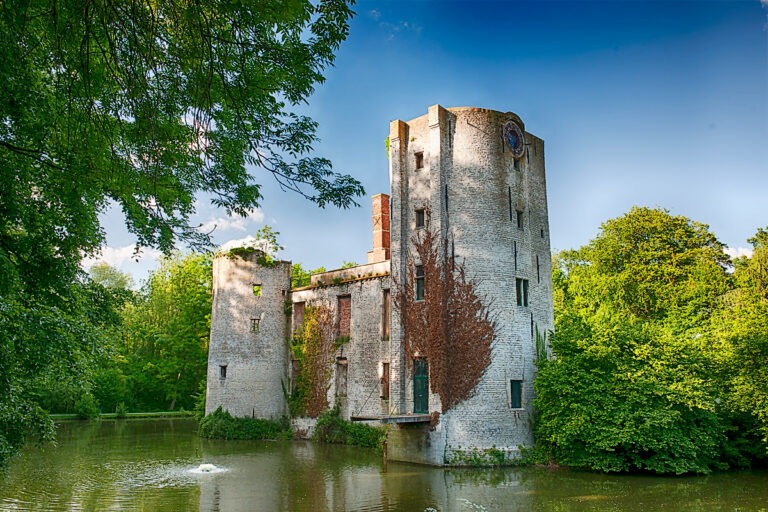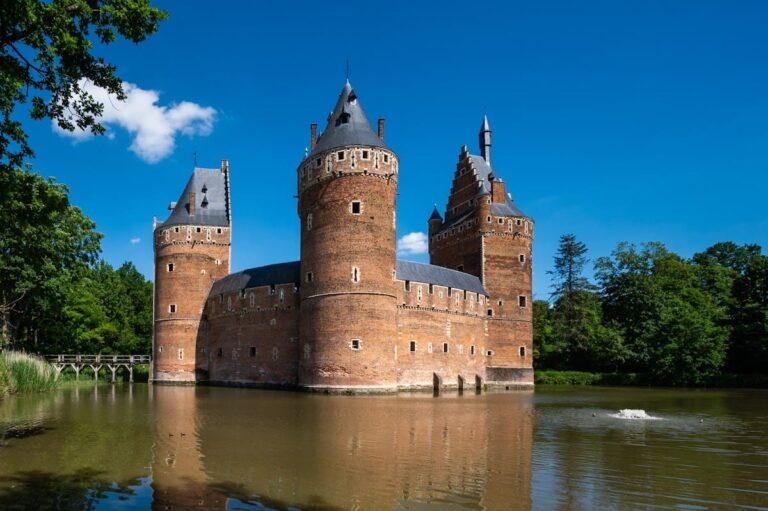Karreveld Castle: A Historic Manor and Cultural Site in Molenbeek-Saint-Jean, Belgium
Visitor Information
Google Rating: 4.3
Popularity: Medium
Google Maps: View on Google Maps
Official Website: www.molenbeek.irisnet.be
Country: Belgium
Civilization: Unclassified
Remains: Military
History
Karreveld Castle is situated in the municipality of Molenbeek-Saint-Jean in present-day Belgium. This estate has medieval origins linked to the Duchy of Brabant, a historical state in the Low Countries.
The earliest recorded mention of Karreveld dates back to 1253, when Duke John I of Brabant granted the land, then known as “Carnevelt” or “Karreveld,” to his wife Marguerite, who was the daughter of King Saint Louis of France. While the original medieval estate predates the surviving structure, the present castle was constructed during the 16th or 17th century, serving as a manor that combined agricultural functions with a lordly residence.
Throughout the following centuries, ownership of the estate changed hands multiple times. In 1656, the widow of Jérôme Van Ghindertaelen sold Karreveld to Don Garcia Osario y Borgia. Later, in 1780, the Villegas family, owners also of the nearby Rivieren Castle, acquired the property. Political-administrative shifts altered the estate’s municipal affiliation in 1812, moving it from Anderlecht to the municipality of Molenbeek.
By the early 20th century, parts of the castle had fallen into neglect, and urban expansion threatened the site, especially due to plans linked to the nearby Brussels ring road known as the Boulevards de Grande Ceinture. In response, the local government of Molenbeek-Saint-Jean purchased the 16-hectare property in 1930, aiming both to develop part of the land for urban use and to preserve the castle and park as public green space.
Between 1952 and 1958, the castle underwent extensive restoration managed by municipal architect Pierre De Bruyne. This work stabilized the building, adapted it for new uses, and returned many historical elements to public view. The restoration coincided with the castle’s official designation as a protected monument in 1955 and was officially inaugurated during the Brussels World’s Fair in August 1958.
Apart from its architectural and historical significance, Karreveld played a pioneering role in Belgian cinema. From 1912 to 1923, film producer Charles Pathé appointed filmmaker Alfred Machin to establish Belgium’s first film studio on the castle grounds. This early cinematic complex included workshops and a small zoological garden housing exotic animals used as film actors, such as bears, camels, and panthers. Among the notable films produced there were “La Fille de Delft” and “Maudite soit la guerre,” which marked important milestones in the country’s early film history.
Today, Karreveld Castle and its surrounding park serve cultural and civic functions, hosting municipal meetings and cultural festivals that continue to animate the historic estate.
Remains
Karreveld Castle stands as a manor that harmoniously blends features typical of a farming estate with those of a noble residence. Set upon marshy terrain, the building required the insertion of new foundations during its mid-20th-century restoration to ensure structural stability. The main body of the castle presents a façade facing a pond, distinguished by a pointed gable that contributes to its historic silhouette. Notably, the façade reveals exposed Spanish brickwork beneath earlier layers of whitewash removed before 1930, highlighting its authentic construction materials.
Within the castle’s inner courtyard, on the east side, visitors find a barn that was rebuilt as part of the restoration efforts. This barn features a large, monumental fireplace that was relocated from Havré Castle, integrating a significant architectural element from another historic site. The barn’s wooden roof structure remains visible, recalling traditional building techniques. Adjacent to this barn is a tavern crowned by an Elizabethan-style balustraded gallery, adding a decorative and functional element typical of the period’s social spaces.
Inside the castle, the interior decoration showcases a range of historical influences. A salon exhibits Renaissance stylistic elements, while two rooms upstairs reflect French design tastes from later periods. In the attic, a meeting room designed in the style of a monastic hall retains exposed wooden beams, evoking a rustic yet solemn atmosphere. Additionally, an oratory—a small chapel space—was recreated in the left wing of the former hostelry; it resides beneath a turret surmounted by a campanile, or small bell tower, lending a spiritual dimension to this part of the building.
The castle grounds include a gatehouse and a dovecote, the latter equipped with a weather vane, features commonly associated with estates of this nature for controlling access and housing pigeons, respectively.
Surrounding the castle is a park of about three hectares, carefully redesigned to respect its historical layout. The original defensive moat around the castle was converted into a pond bordered by a semicircular (half-moon) sandstone ravelin—a low protective wall used in fortifications—embellished with flowerbeds and seating alcoves for repose and enjoyment. Behind the castle extends a formal French garden characterized by flower basins and geometrically trimmed yew hedges that lead into a wooded area designed to shield the garden from the adjacent busy boulevard, thus creating a tranquil setting.
Two paved pathways define the park’s limits. One functions as a monumental approach from Boulevard Louis Mettewie, bordered by undergrowth and lighting that accentuate its prominence. The other links two avenues and provides access to nearby villas while running alongside a large lawn planted with rare tree species.
The park is notable for housing a diverse collection of conifer trees, including Himalayan cedar, Lebanese cedar, Japanese cedar, Douglas fir, black pine, Weymouth pine, European yew, and Japanese larch. This variety enhances the botanical richness and visual interest of the estate’s green spaces.
Although no longer present within the current castle complex, the film studio established in the early 20th century once stood on the grounds with specialized glass studios and workshops. It also included a small zoo, where exotic animals such as bears, camels, and panthers were kept to appear in early Belgian films, linking the site’s heritage to the country’s cinematic beginnings.










